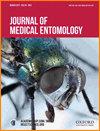How to store a beetle larva? Comparing temporal effects of common fluid preservation methods on color, shape, and DNA quality
IF 2
3区 农林科学
Q1 ENTOMOLOGY
引用次数: 0
Abstract
Proper fixing and long-term preservation of entomological evidence are essential in collections and research and crucial in applied fields such as forensic entomology. Incorrectly stored samples may lose important morphological features over time, rendering molecular analyses exceedingly difficult. The most effective method for preserving soft samples such as larvae is fluid preservation. It uses a combination of a wide range of fixatives and storage fluids. However, very little comparative work has been done to determine the effects of long-term storage on sample quality in terms of color, shape, and DNA stability. Moreover, the current golden standard in forensic entomology has been tailored for age estimation of larvae of Diptera, which differ from larvae of Coleoptera in morphology and subsequently in applied methods. We compared the effects of combinations of 6 commonly used fixatives and 6 commonly used storage fluids on midsized larvae of the forensically important beetle, Necrodes littoralis (Linnaeus, 1758), in terms of color, shape, and suitability for DNA analyses over a 2-yr period. We were looking for combinations that can preserve specimens in a satisfactory state, can be used on a regular basis, do not require advanced protection or skills of the personnel, and are not toxic or too harmful to the environment. We found not only several methods that scored significantly better in the tested parameters compared with the golden standard but also several common methods that should be avoided. The effects of agents on each tested category are discussed in detail.如何保存甲虫幼虫?比较常用液体保存方法对颜色、形状和 DNA 质量的时间影响
昆虫学证据的适当固定和长期保存对收集和研究工作至关重要,对法医昆虫学等应用领域也至关重要。保存不当的样本可能会随着时间的推移失去重要的形态特征,给分子分析带来极大的困难。保存幼虫等软样本最有效的方法是液体保存法。它综合使用了多种固定剂和保存液。然而,在确定长期保存对样本颜色、形状和 DNA 稳定性等质量的影响方面,几乎没有进行过比较研究。此外,目前法医昆虫学的黄金标准是针对双翅目幼虫的年龄估计而制定的,而双翅目幼虫在形态上与鞘翅目幼虫不同,因此在应用方法上也不尽相同。我们比较了 6 种常用固定剂和 6 种常用贮藏液的组合对具有重要法医意义的甲虫 Necrodes littoralis (Linnaeus, 1758) 中型幼虫的颜色、形状和 DNA 分析适用性的影响,时间跨度为 2 年。我们一直在寻找能以令人满意的状态保存标本、可定期使用、不需要高级保护或人员技能、无毒或对环境无害的组合方法。我们不仅发现了几种在测试参数上明显优于黄金标准的方法,还发现了几种应避免使用的常用方法。我们将详细讨论药剂对每个测试类别的影响。
本文章由计算机程序翻译,如有差异,请以英文原文为准。
求助全文
约1分钟内获得全文
求助全文
来源期刊
CiteScore
4.60
自引率
14.30%
发文量
207
审稿时长
3-8 weeks
期刊介绍:
Journal of Medical Entomology is published bimonthly in January, March, May, July, September, and November. The journal publishes reports on all phases of medical entomology and medical acarology, including the systematics and biology of insects, acarines, and other arthropods of public health and veterinary significance. In addition to full-length research articles, the journal publishes Reviews, interpretive articles in a Forum section, Short Communications, and Letters to the Editor.

 求助内容:
求助内容: 应助结果提醒方式:
应助结果提醒方式:


